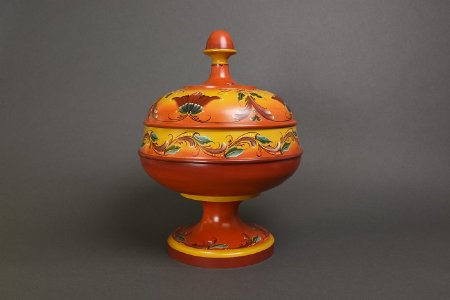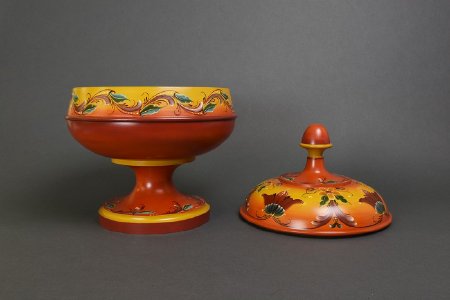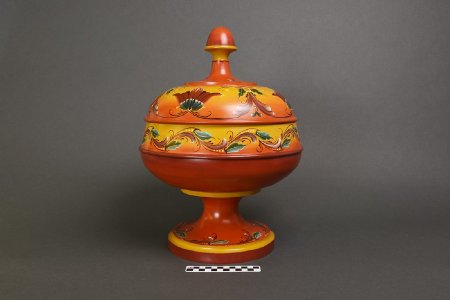Description:
Keeping the Tradition Alive
Rosemaling is a traditional Norwegian decorative folk art that flourished during the 18th and 19th centuries in rural Norway. The art form uses stylized scrolls and flowers influenced by Baroque and Rococo styles. Immigrants brought Rosemaling to America, thriving in Scandinavian communities throughout the Midwest and popular with Ketchikan's Norwegian community.
This month's featured artifact is a red, orange, and yellow wooden compote made by Rosemaler Arlene Hudson in 1987. Floral designs on the compote are a mixture of Rosemaling techniques Hallingdal, which is characterized by large bold flowers as the main design element, and Telemark which uses graceful scrolls and asymmetrical features.
Arlene started her art career here in 1972 studying forms of Norwegian folk art like Rosemaling and tole painting with International Rosemaler Gary Albrecht of Madison, Wisconsin. When in Ketchikan, Arlene worked for the Ketchikan Pulp Company as a secretary and she also taught art classes for seven years at the local university, which was then called Ketchikan Community College. Arlene continues to teach, create, and show in conjunction with her husband, beloved former Schoenbar Jr. High art teacher and wood sculptor, Doug Hudson. The Hudsons currently reside in Bellingham, Washington.
The compote is on exhibit at the Tongass Historical Museum in the special exhibit, "Solving Problems: Telling Stories" and on view through January 2020.
Ketchikan Museums, KM 87.2.54.1 A&B




